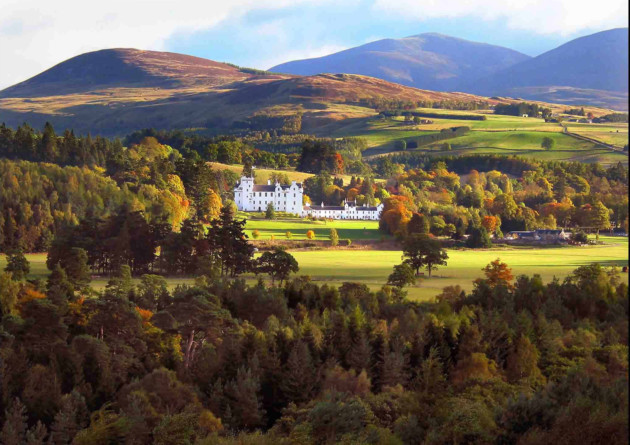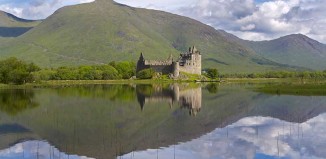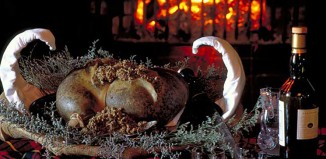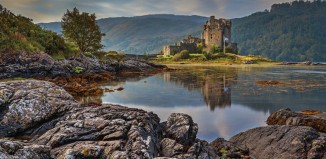Highland Perthshire
Angharad Moran
Located in the very heart of Scotland, Highland Perthsire holds a fascinating history and one or two surprises tucked away amid its stunning scenery.
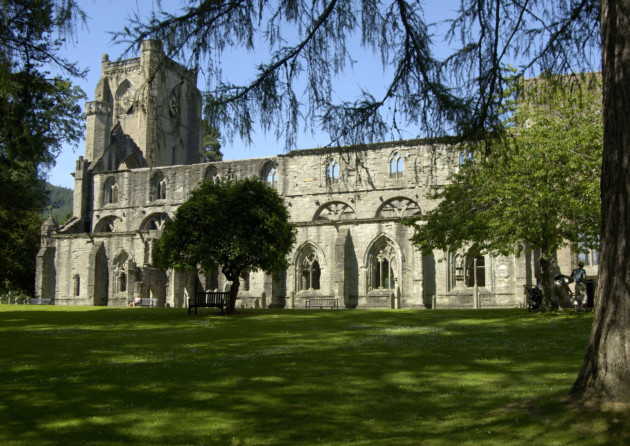
Dunkeld Cathedral. © Crown Copyright reproduced courtesy of Historic Scotland
The enchanting landscape of Highland Perthshire is one of woodlands bristling with fir trees, punctuated by mountains, castles and lochs. Among them, a breadcrumb trail of small towns, their streets lined with brooding Victorian stone buildings, leads visitors further and further into the epicentre of Scotland, where tales of Bonnie Prince Charlie and Jacobite rebellions abound.
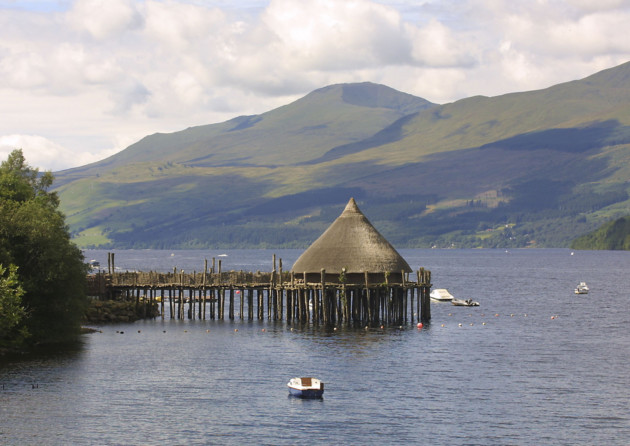
The Crannog Centre
Prior to the 18th century the Scottish highlands were seen as an inaccessible and wild place, where only the boldest of travellers would dare venture, but this was all to change towards the end of the century when a series of roads were created by General George Wade. These new routes linked the area’s main military sites in an attempt to try and put a stop to any Jacobite stirrings, but they also provided a route into the heart of the Highlands that would later see the area opened up to tourism. This, coupled with the introduction of the railway in the mid 1800s, saw towns such as Pitlochry, Dunkeld, Birnam and Aberfeldy placed firmly on the map as visitor destinations, even enticing Queen Victoria to make the journey from London.
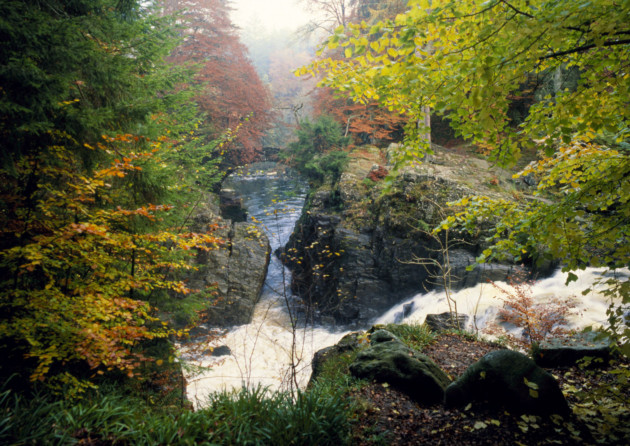
The River Braan and the bridge at Ossian’s Hall. Copyright 2007 National Trust for Scotland
From Pitlochry’s collection of whiskey distilleries (where both the smallest and one of the oldest in Scotland can be found), to Dunkeld’s selection of independent shops and tempting tearooms, this string of Highland towns continues to draw visitors, hopping from one to the next like stepping stones along the River Tay, to take in their individual charms. Laced in and around the towns themselves, a host of historic attractions await discovery, including Blair Castle which was a particular favourite of Queen Victoria. Located in Blair Atholl near Pitlochry, and tucked among the trees at the gateway to the Grampian Mountains, this pearly-white affair adorned with turrets and towers is straight out of a fairytale. The ancestral home of the Dukes of Atholl, the oldest part of the castle dates back to the 14th century, but the building has been extended and altered many times since then, mainly due to changing fashions and political allegiances.
Today, visitors to the castle can explore the richly decorated interiors from the imposing Entrance Hall, its dark-wood walls glistening with ornamental weaponry, to the elegant Drawing and Dining Rooms complete with intricate plasterwork, original paintings and fine furnishings. Passing through each room reveals more about the history of the building and the Dukes of Atholl themselves, but for those wanting to delve even further still, attic tours can be arranged, allowing visitors to climb the tightly-wound spiral staircase to the very top of the building where male servants and single guests would have been housed. Today, this area is used as a storage space for archive collections. Each small room passed is packed to the rafters with furniture, paintings and papers.
One attic room holds the original Atholl Highlanders’ colours that were granted to this military regiment by Queen Victoria during her three-week stay in 1844. First raised by the 4th Duke in 1778, the Atholl Highlanders were charged with being the Queen’s personal guard and she was so pleased with their service that she granted them the right to carry her colours as well as the right to bear arms, and in so doing created Europe’s only private army. Each year, during the last bank holiday weekend in May, visitors to the castle can witness the Atholl Highlanders’ Parade during The Atholl Gathering when a host of highland games also take place in the grounds.
As well as raising the Atholl Highlanders, the 4th Duke made an impressive impact on the surrounding landscape, planting 25 million larch trees, with stories passed down of how he would fire the seeds from a cannon to disperse them. This helped to build on the work of the 3rd Duke who created The Hermitage, a woodland extension to the grounds at the family’s second home in Dunkeld. Today, visitors to these woods will be following in the footsteps of Wordsworth, Mendelssohn, Turner and Queen Victoria as they make their way along the snaking path through the Douglas firs to Ossian’s Hall. This small folly was constructed to surprise those who passed through its seemingly sealed doorway only to find themselves in a room with a balcony overlooking the Black Linn waterfall, where salmon can be seen leaping out of the rushing white water in the autumn. Those behind the hall’s construction can rest easy in the knowledge that it still achieves the desired effect.
Other wildlife such as red squirrel can also be seen scampering among the treetops, although you may have to crane your neck to see them as The Hermitage is home to some of the tallest trees in Britain, including a colossal Douglas fir standing at just over 64m, which helps to give Perthshire its label of ‘Big Tree Country’.
One of the original parent larches, brought over from Europe in order to provide a source of seeds for the 4th Duke’s large-scale plantings, can also be found in the grounds of Dunkeld Cathedral, just a short drive from The Hermitage. Although the cathedral itself dates from medieval times, it is possible to see stonework dating back to the 800s. The present building took over 200 years to construct and eagle-eyed visitors might be able to spot the individual makers’ marks etched into the stonework inside as well as the pockmarks left by the Battle of Dunkeld in 1689 on the exterior.
From Dunkeld the route of the River Tay leads through Aberfeldy, made famous by Robert Burns’ poem ‘The Birks of Aberfeldie’ written during a visit to the town in 1787 on his famous tour of the Highlands. It was during this visit that he also stopped at the Inn at Kenmore, near Loch Tay. Built in 1572, the inn is Scotland’s oldest and holds a permanent reminder of Burns’ visit: a poem written on the wall in his own hand, inspired by his exploration of the area.
Travelling further around Loch Tay, an intriguing structure juts out onto the water, resting on stilts driven into the loch bed. Resembling Scotland’s answer to a tropical beach hut, this is in fact a recreation of an Iron Age loch dwelling known as a crannog. Visitors to the Crannog Centre at Loch Tay can make their way across the little wooden jetty that leads out to the conical structure to discover more about how the ancient inhabitants of such dwellings would have lived.
Inside, bracken rustles underfoot while blankets and pelts line the walls where small slivers of sunlight fight their way through chinks in the alder frame. While this whole scene may resemble a fire warden’s worst nightmare, the overall effect is one of cosiness, where it is possible to imagine shutting the door and forgetting the outside world.
The recreation has been built based on the findings of an underwater archaeological excavation of an original crannog found at another point in the loch. Between 20 and 40 people would have shared the space inside, along with animals that would have lived within penned-off areas, while the high roof would have allowed for extra sleeping and storage areas to be incorporated. It is believed that the crannogs would have been inhabited by extended affluent families who would use them as a form of defended homestead. Although the heyday of this type of dwelling was during the Iron Age, examples of similar structures have been found dating up to the 17th century when they would have been positioned on small islands, rather than merely resting on stilts.
Whether you want to explore castles and woodland, follow in the footsteps of Bonnie Prince Charlie and the Jacobites, or simply wander the munros gazing upon the scenery that inspired Burns, you can’t fail to be charmed by the fairytale landscape of Highland Perthshire.

